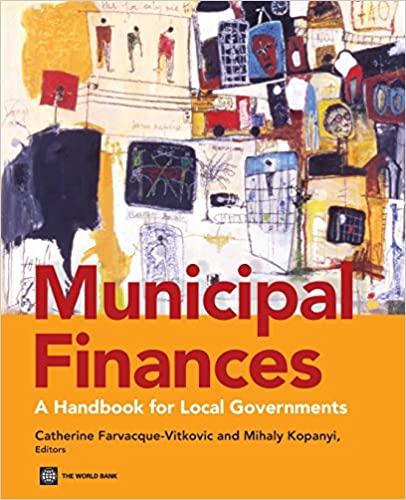Gain from Trade: The Theory of Comparative Advantage The theory of comparative advantage was originally advanced by the 19th-century economist David Ricardo as an explanation for why nations trade with one another. The theory claims that economic well-being is enhanced if each country's citizens produce that which they have a comparative advantage in producing relative to the citi- zens of other countries, and then trade products. Underlying the theory are the assump- tions of free trade between nations and that the factors of production (land, labor. technology, and capital) are relatively immobile. Consider the example described in Exhibit A. I as a vehicle for explaining the theory. Exhibit A.1 assumes two countries, A and B, which each produce only food and textiles, but they do not trade with one another. Country A and B each have 60.000.000 units of input. Each country presently allocates 40.000.000 units to the production of food and 20,000,000 units to the production of textiles. Examination of the exhibit shows that Country A can produce five pounds of food with one unit of production or three yards of textiles. Country B has an absolute advantage over Country A in the production of both food and textiles. Country B can produce 15 pounds of food or four yards of textiles with one unit of production. When all units of production are employed, Country A can produce 200,000,000 pounds of food and 60,000,000 yards of textiles. Country B can produce 600,000,000 pounds of food and 80,000,000 yards of textiles. Total output is 800,000,000 pounds of food and 140,000,000 yards of tex- tiles. Without trade, each nation's citizens can consume only what they produce. While it is clear from the examination of Exhibit A.1 that Country B has an absolute advantage in the production of food and textiles, it is not so clear that Country A (B) has a relative advantage over Country B (A) in producing textiles (food). Note that using units of production, Country A can "trade off one unit of production needed to produce five pounds of food for three yards of textiles. Thus, a yard of textiles has sa opportunity cost of 5/3 = 1.67 pounds of food, or a pound of food has an opportunity cost of 3/5 60 yards of textiles. Analogously, Country B has an opportunity cost of 15/4 = 3.75 pounds of food per yard of textiles, or 4/15 = 27 yards of textiles per pound of food. When viewed in terms of opportunity costs it is clear that Country A Country EXHIBIT A. 1 Output thout Trade 1 Units of input (000,000) Food Textiles IL Output per unit of input (lbs. or yards) Food Textiles III. Total output (lbs. or yards) (000,000) Food Textiles IV. Consumption (lbs. or yards) (000,000) Food Textiles 800 140 800 600 140 Gain from Trade: The Theory of Comparative Advantage The theory of comparative advantage was originally advanced by the 19th-century economist David Ricardo as an explanation for why nations trade with one another. The theory claims that economic well-being is enhanced if each country's citizens produce that which they have a comparative advantage in producing relative to the citi- zens of other countries, and then trade products. Underlying the theory are the assump- tions of free trade between nations and that the factors of production (land, labor. technology, and capital) are relatively immobile. Consider the example described in Exhibit A. I as a vehicle for explaining the theory. Exhibit A.1 assumes two countries, A and B, which each produce only food and textiles, but they do not trade with one another. Country A and B each have 60.000.000 units of input. Each country presently allocates 40.000.000 units to the production of food and 20,000,000 units to the production of textiles. Examination of the exhibit shows that Country A can produce five pounds of food with one unit of production or three yards of textiles. Country B has an absolute advantage over Country A in the production of both food and textiles. Country B can produce 15 pounds of food or four yards of textiles with one unit of production. When all units of production are employed, Country A can produce 200,000,000 pounds of food and 60,000,000 yards of textiles. Country B can produce 600,000,000 pounds of food and 80,000,000 yards of textiles. Total output is 800,000,000 pounds of food and 140,000,000 yards of tex- tiles. Without trade, each nation's citizens can consume only what they produce. While it is clear from the examination of Exhibit A.1 that Country B has an absolute advantage in the production of food and textiles, it is not so clear that Country A (B) has a relative advantage over Country B (A) in producing textiles (food). Note that using units of production, Country A can "trade off one unit of production needed to produce five pounds of food for three yards of textiles. Thus, a yard of textiles has sa opportunity cost of 5/3 = 1.67 pounds of food, or a pound of food has an opportunity cost of 3/5 60 yards of textiles. Analogously, Country B has an opportunity cost of 15/4 = 3.75 pounds of food per yard of textiles, or 4/15 = 27 yards of textiles per pound of food. When viewed in terms of opportunity costs it is clear that Country A Country EXHIBIT A. 1 Output thout Trade 1 Units of input (000,000) Food Textiles IL Output per unit of input (lbs. or yards) Food Textiles III. Total output (lbs. or yards) (000,000) Food Textiles IV. Consumption (lbs. or yards) (000,000) Food Textiles 800 140 800 600 140







